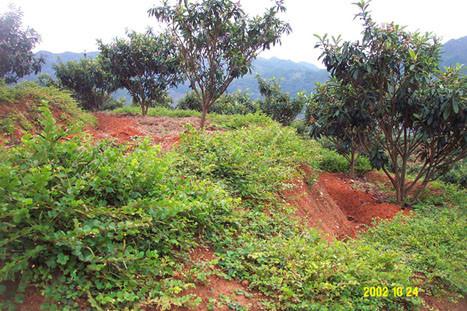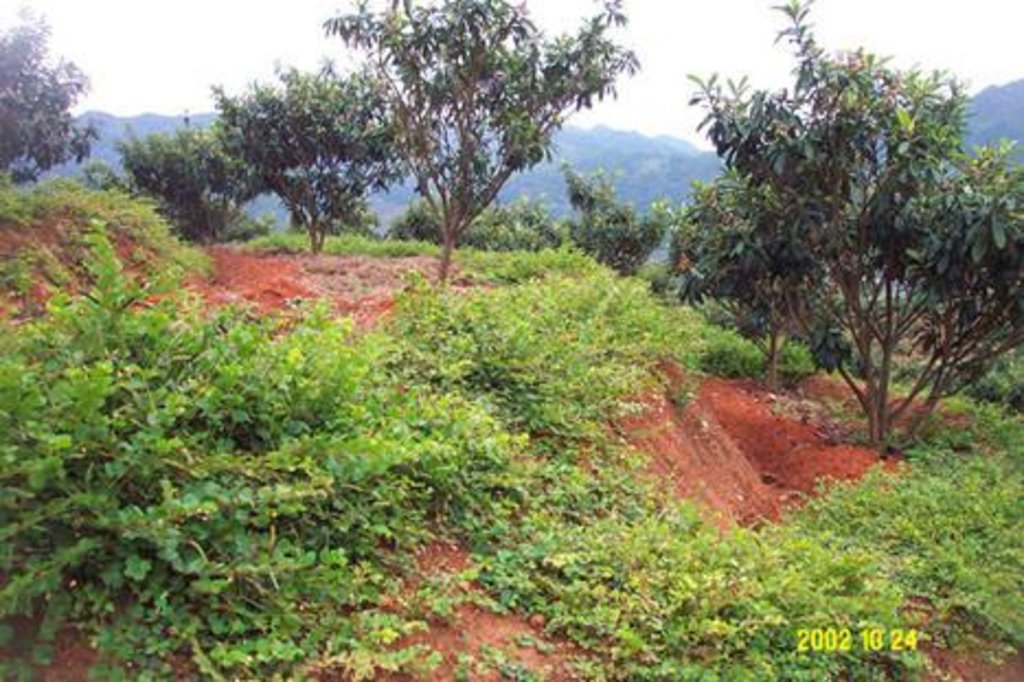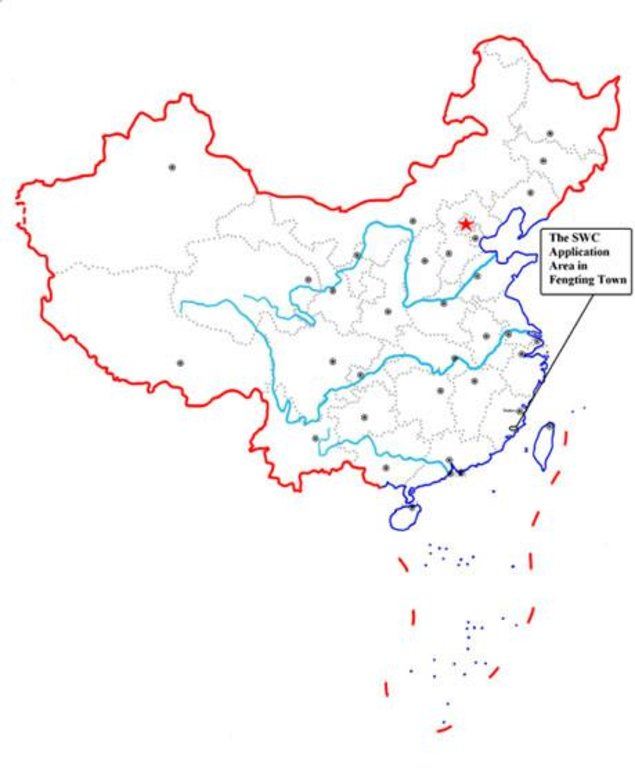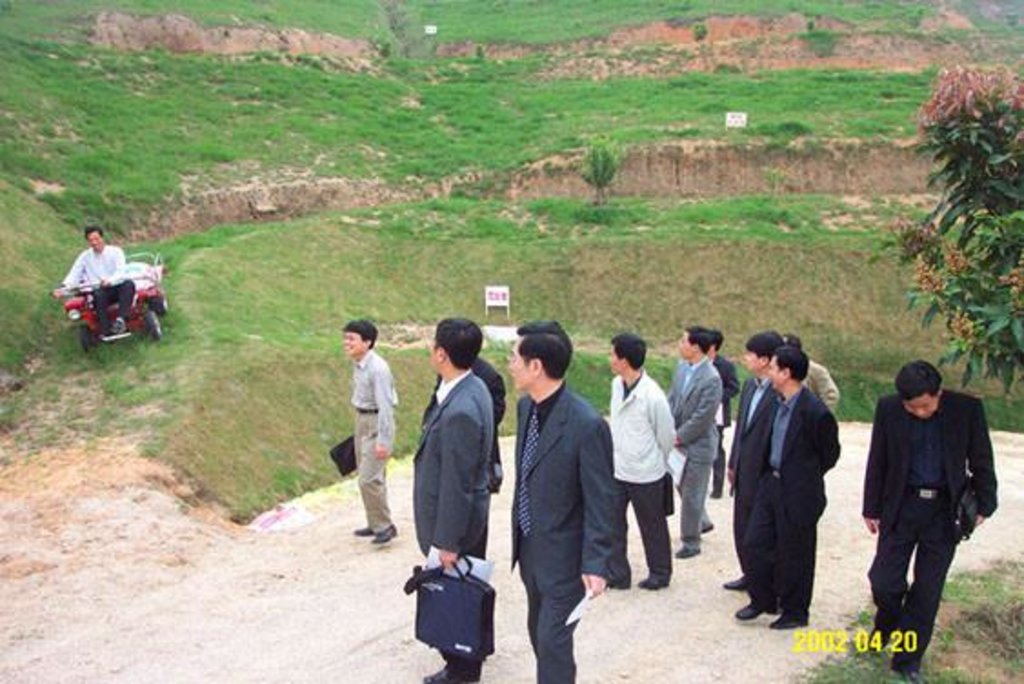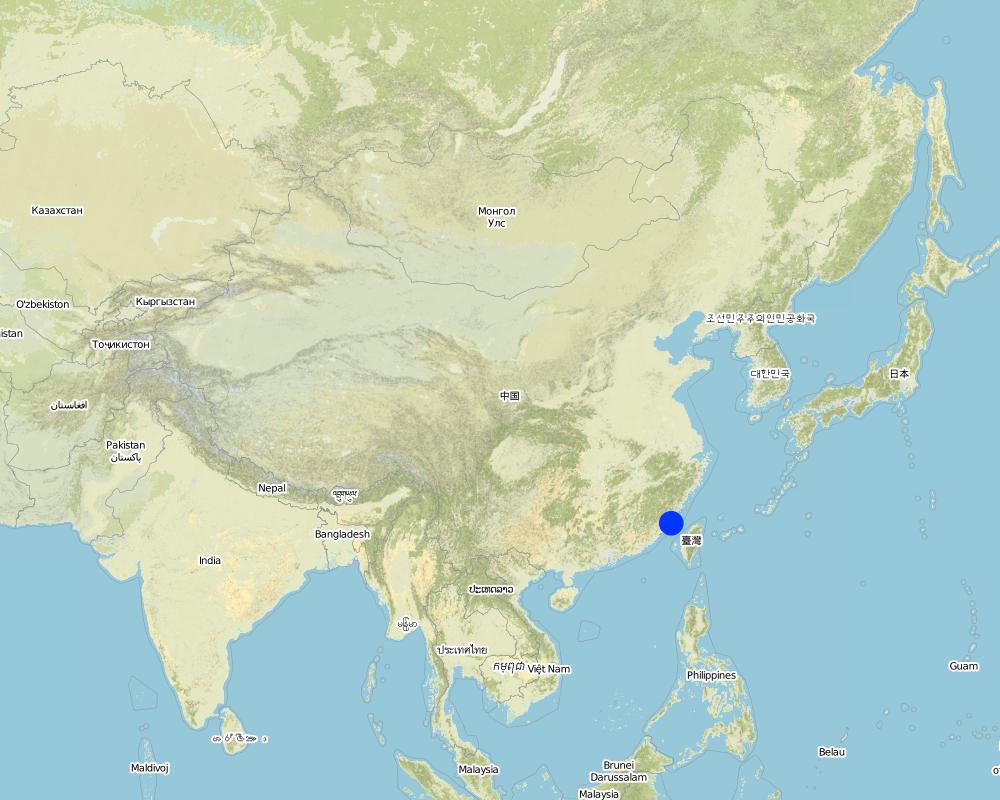Front Bank, Back Ditch on Contour Terraces [China]
- Creation:
- Update:
- Compiler: Unknown User
- Editor: –
- Reviewer: Laura Ebneter
approaches_2406 - China
View sections
Expand all Collapse all1. General information
1.2 Contact details of resource persons and institutions involved in the assessment and documentation of the Approach
Key resource person(s)
SLM specialist:
Lin Wengian
Soil & Water Conservation Office of Putian
No. 13 Canghou Road, Chengnei District of Putian City, 351100, Putian, Fujian
China
Name of the institution(s) which facilitated the documentation/ evaluation of the Approach (if relevant)
Soil & Water Conservation Office of Putian - China1.3 Conditions regarding the use of data documented through WOCAT
The compiler and key resource person(s) accept the conditions regarding the use of data documented through WOCAT:
Yes
1.4 Reference(s) to Questionnaire(s) on SLM Technologies
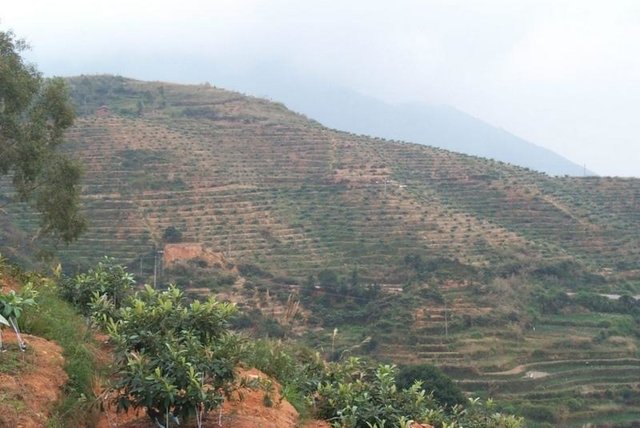
Orchard Rehabilitation [China]
Contour terrace protection with front bank and three ditches in orchard rehabilitation.
- Compiler: Unknown User
2. Description of the SLM Approach
2.1 Short description of the Approach
Using contour principle, constructing terraces with the front bank and back ditch in order to control soil & water erosion.
2.2 Detailed description of the Approach
Detailed description of the Approach:
In the area with sufficient rainfall, overflow and runoff often destroy the existing terraces causing much cost for maintaining. Sluice system of terraces is important when building a terrace. The technology of the Front Bank and Back Ditch on Terrace is to solve this problem. The approach is that building front bank on a terrace edge and digging a ditch on the back terrace as well as digging a ditch upright the terrace along a relatively low rill to induct overflow out.
2.3 Photos of the Approach
2.5 Country/ region/ locations where the Approach has been applied
Country:
China
Region/ State/ Province:
Fujian
Map
×2.6 Dates of initiation and termination of the Approach
Indicate year of initiation:
1991
Year of termination (if Approach is no longer applied):
1996
2.7 Type of Approach
- project/ programme based
2.8 Main aims/ objectives of the Approach
Controlling the soil erosion and raising farmers' consciousness of soil conservation.
The SLM Approach addressed the following problems: The poor quality of fruit trees and seedlings and Disafforestation of the natural vegetation by the man-made factors resulted in the soil erosion and low agricultural production and hindered the local socio-economic development. In addition, the local farmers lack fund.
2.9 Conditions enabling or hindering implementation of the Technology/ Technologies applied under the Approach
availability/ access to financial resources and services
- hindering
Lack of fund
Treatment through the SLM Approach: Raising fund and obtain subsidy from government.
legal framework (land tenure, land and water use rights)
- enabling
The existing land ownership, land use rights / water rights moderately helped the approach implementation: Separation between ownership and usufruct of land, to some extent, enhances the land users' enthusiasm of SWC investment.
knowledge about SLM, access to technical support
- hindering
Enhancing training propaganda of SWC technology to farmers.
3. Participation and roles of stakeholders involved
3.1 Stakeholders involved in the Approach and their roles
- local land users/ local communities
working land users were work equally divided between men and women (Among the farmers and the soil conservation agencies.)
taking in charge of the program
- SLM specialists/ agricultural advisers
- local government
assisting the programe design, soil conservation institute
3.2 Involvement of local land users/ local communities in the different phases of the Approach
| Involvement of local land users/ local communities | Specify who was involved and describe activities | |
|---|---|---|
| initiation/ motivation | external support | |
| planning | none | |
| implementation | none | responsibility for major steps |
| monitoring/ evaluation | self-mobilization | interviews/questionnaires; |
| Research | interactive |
3.4 Decision-making on the selection of SLM Technology/ Technologies
Specify who decided on the selection of the Technology/ Technologies to be implemented:
- mainly SLM specialists, following consultation with land users
Explain:
Decisions on the method of implementing the SLM Technology were made by mainly by SLM specialists with consultation of land users.
4. Technical support, capacity building, and knowledge management
4.1 Capacity building/ training
Was training provided to land users/ other stakeholders?
Yes
Specify who was trained:
- land users
- SWC specialists, Planners(3)
Form of training:
- demonstration areas
- courses
Form of training:
- farm visits
Subjects covered:
Teaching them how to control pests and diseases and new techniques on management of orchards.
4.2 Advisory service
Do land users have access to an advisory service?
Yes
Describe/ comments:
Name of method used for advisory service: Soil Conservation in Orchard; Key elements: Setup a demonstration area, field visit, organizing; 1) Mainly: projects own extension structure and agents, Partly: government's existing extension system 2) Mainly: projects own extension structure and agents, Partly: government's existing extension system; Extension staff: Mainly government employees 3) Target groups for extension: Land users, SWC specialists; Activities: demonstration of the field; extend the techniques.
4.3 Institution strengthening (organizational development)
Have institutions been established or strengthened through the Approach?
- yes, moderately
Specify the level(s) at which institutions have been strengthened or established:
- local
Specify type of support:
- capacity building/ training
4.4 Monitoring and evaluation
Is monitoring and evaluation part of the Approach?
Yes
Comments:
technical aspects were regular monitored through measurements
socio-cultural aspects were ad hoc monitored by through observations
economic / production aspects were ad hoc monitored through measurements
area treated aspects were regular monitored through measurements
land users involved aspects were ad hoc monitored through measurements
management of Approach aspects were ad hoc monitored through observations
There were few changes in the Approach as a result of monitoring and evaluation: Through in situ observation and demonstration
4.5 Research
Was research part of the Approach?
Yes
Specify topics:
- technology
Give further details and indicate who did the research:
Studying on engineering and vegetative measures. Research was carried out both on station and on-farm
5. Financing and external material support
5.1 Annual budget for the SLM component of the Approach
If precise annual budget is not known, indicate range:
- 100,000-1,000,000
Comments (e.g. main sources of funding/ major donors):
Approach costs were met by the following donors: international: 30.0%; national non-government: 15.0%; local community / land user(s): 55.0%
5.2 Financial/ material support provided to land users
Did land users receive financial/ material support for implementing the Technology/ Technologies?
Yes
5.3 Subsidies for specific inputs (including labour)
- equipment
| Specify which inputs were subsidised | To which extent | Specify subsidies |
|---|---|---|
| machinery | ||
| tools | ||
- agricultural
| Specify which inputs were subsidised | To which extent | Specify subsidies |
|---|---|---|
| seeds | seedlings | |
- infrastructure
| Specify which inputs were subsidised | To which extent | Specify subsidies |
|---|---|---|
| community infrastructure | ||
If labour by land users was a substantial input, was it:
- voluntary
Comments:
and paid in cash
5.4 Credit
Was credit provided under the Approach for SLM activities?
No
6. Impact analysis and concluding statements
6.1 Impacts of the Approach
Did the Approach help land users to implement and maintain SLM Technologies?
- No
- Yes, little
- Yes, moderately
- Yes, greatly
They apply much more organic fertilizers to improve the soil fertility.
Did the Approach improve issues of land tenure/ user rights that hindered implementation of SLM Technologies?
- No
- Yes, little
- Yes, moderately
- Yes, greatly
The land use right can help the land users to better develop and manage their lands after signing land use right contract. The problem is likely to be overcome in the near future. Well organizing work can overcome it.
Did other land users / projects adopt the Approach?
- No
- Yes, little
- Yes, moderately
- Yes, greatly
6.3 Sustainability of Approach activities
Can the land users sustain what has been implemented through the Approach (without external support)?
- yes
6.4 Strengths/ advantages of the Approach
| Strengths/ advantages/ opportunities in the land user’s view |
|---|
| Increasing yield (fruit trees and crops), and income. (How to sustain/ enhance this strength: introducing new species in.) |
| Strengths/ advantages/ opportunities in the compiler’s or other key resource person’s view |
|---|
| Harvesting or inducing excrescent rainfall and runoff. (How to sustain/ enhance this strength: Maintaining timely) |
| Making fully use of the mountain and hilly areas with SWC and developing local economy. (How to sustain/ enhance this strength: Introducing new species in.) |
6.5 Weaknesses/ disadvantages of the Approach and ways of overcoming them
| Weaknesses/ disadvantages/ risks in the land user’s view | How can they be overcome? |
|---|---|
| Cost much and liitle fund available. | Raising money and trying to use mechanic tools in stead of manual labor. |
| Weaknesses/ disadvantages/ risks in the compiler’s or other key resource person’s view | How can they be overcome? |
|---|---|
| Cost much for the construction. | subsidy from government, and planting cash crops and fruit trees etc. to increase the return. |
7. References and links
7.1 Methods/ sources of information
- field visits, field surveys
- interviews with land users
Links and modules
Expand all Collapse allLinks

Orchard Rehabilitation [China]
Contour terrace protection with front bank and three ditches in orchard rehabilitation.
- Compiler: Unknown User
Modules
No modules


